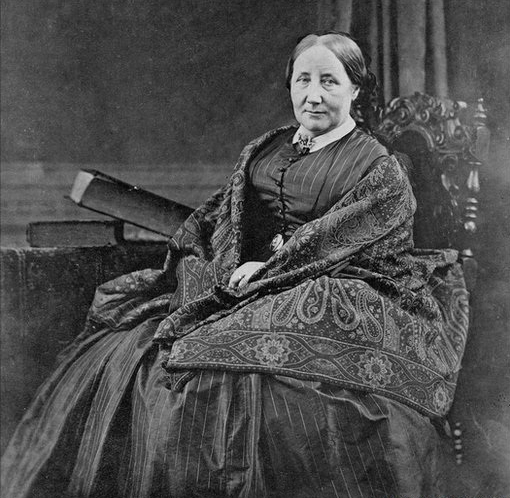Elizabeth Gaskell and the politics of workers and women in the 19th century

During the six weeks that I have been recovering from my hip replacement surgery, I have been reading and listening to the novels of Elizabeth Gaskell. First I listened to Ruth, then read Wives and Daughters, and finally Mary Barton. It turned out that Ruth is a midcareer book, 1853, Wives and Daughters at the end of her life, left unfinished 1864-5, and Mary Barton her first novel, 1848.
She is best known for North and South, which I read a long time ago, and Crandell, also a BBC series, which I found less compelling than the three above.
As a married Victorian writer ( she was married to a Unitarian minister who worked with the poor, an important fact that contributed to her insights.) Gaskell had six children, half of whom died. The death of her second child led to her novel Mary Barton.
I was riveted by this novel. the characters are vivid, the plot intense ( so intense that I had to listen to it in little bits to avoid being overcome with anxiety), the politics beautifully incorporated into the narrative. It was written the year that Marx published his Communist Manifesto. In the novel, not only does the heroine avoid becoming a fallen woman by her own insight, but she saves her lover from being hung for murder. But the real confrontation in the novel set between 1838-42 in Manchester at the time of the beginning of the Chartist movement (featured also in the miniseries Victoria on Netflix now), is between the working class and the owners of industry. At first it is a march to London to ask for improvement of the horrible conditions of poverty of the working class, then it is a strike with a demand for more pay, then it is an act of revenge against oppression, and in the end it is an amazing communication between an articulate impoverished man and the owner of a foundry whose son has been murdered in revenge for oppression. This exchange ends with their shaking hands, a symbol of communication between workers and owners, and as Gaskell states so eloquently, the grief of the owner at the loss of his son is then channeled into advocating reforms for workers.
Ruth is about a woman who does fall, but then by good luck is saved, by a dissenting minister. She is eventually found out, and shunned as is her son, and she ends as a nurse to those dying of the plague, finally catching it and dying as a result from the man who brought her downfall.
Wives and Daughters is different kind of book. I read the praise for this late work as her “best work” but I disagree. It is focused on the very subtle gradations of difference in class in a small town, micro differences, indicated by behavior, politics, dress, and social customs. It was fascinating ( and also had a strong female heroine), but I found Mary Barton as the real powerhouse story. Gaskell is a later generation than Austin, and I find her much more compelling because she incorporates the politics of the oppressions of the working class and womens vulnerability to downfall and strength to survive into her stories.
If you want a good read this winter turn to Elizabeth Gaskell.
Charles Dickens admired her and published her work in his magazine Household Words, but if you look at her career, it is amazing how many magazines were available for publishing at that time, and how much she published.
PS I just read that mothers tend to not appear in Victorian novels, and it is true, none of the female heroines in Gaskell have living mothers, one has an unfortunate stepmother.
This entry was posted on February 2, 2019 and is filed under Uncategorized, Victorian fiction, Women Artists.








